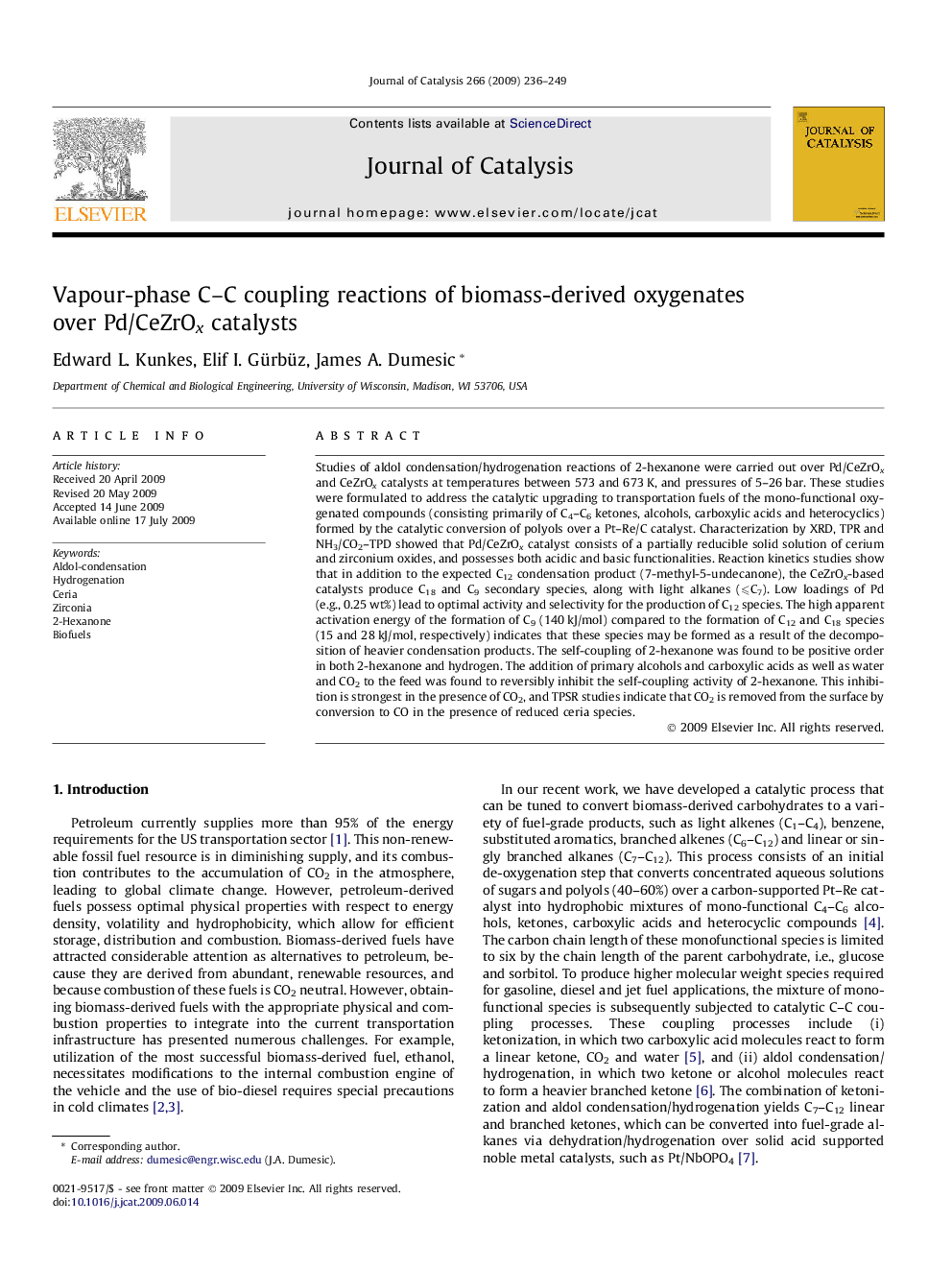| کد مقاله | کد نشریه | سال انتشار | مقاله انگلیسی | نسخه تمام متن |
|---|---|---|---|---|
| 62588 | 47646 | 2009 | 14 صفحه PDF | دانلود رایگان |

Studies of aldol condensation/hydrogenation reactions of 2-hexanone were carried out over Pd/CeZrOx and CeZrOx catalysts at temperatures between 573 and 673 K, and pressures of 5–26 bar. These studies were formulated to address the catalytic upgrading to transportation fuels of the mono-functional oxygenated compounds (consisting primarily of C4–C6 ketones, alcohols, carboxylic acids and heterocyclics) formed by the catalytic conversion of polyols over a Pt–Re/C catalyst. Characterization by XRD, TPR and NH3/CO2–TPD showed that Pd/CeZrOx catalyst consists of a partially reducible solid solution of cerium and zirconium oxides, and possesses both acidic and basic functionalities. Reaction kinetics studies show that in addition to the expected C12 condensation product (7-methyl-5-undecanone), the CeZrOx-based catalysts produce C18 and C9 secondary species, along with light alkanes (⩽C7). Low loadings of Pd (e.g., 0.25 wt%) lead to optimal activity and selectivity for the production of C12 species. The high apparent activation energy of the formation of C9 (140 kJ/mol) compared to the formation of C12 and C18 species (15 and 28 kJ/mol, respectively) indicates that these species may be formed as a result of the decomposition of heavier condensation products. The self-coupling of 2-hexanone was found to be positive order in both 2-hexanone and hydrogen. The addition of primary alcohols and carboxylic acids as well as water and CO2 to the feed was found to reversibly inhibit the self-coupling activity of 2-hexanone. This inhibition is strongest in the presence of CO2, and TPSR studies indicate that CO2 is removed from the surface by conversion to CO in the presence of reduced ceria species.
The primary pathway for aldol condensation/hydrogenation of 2-hexanone on Pd/CeZrOx yields 7-methyl-5-undecanone. Inhibiting effects of CO2 are ameliorated by the presence of Ce3+, formed by H2 spillover from Pd and leading to reduction of CO2 to CO.Figure optionsDownload high-quality image (41 K)Download as PowerPoint slide
Journal: Journal of Catalysis - Volume 266, Issue 2, 10 September 2009, Pages 236–249